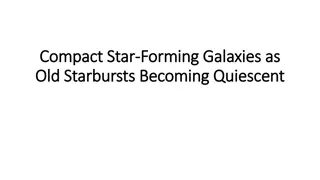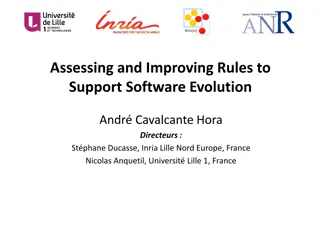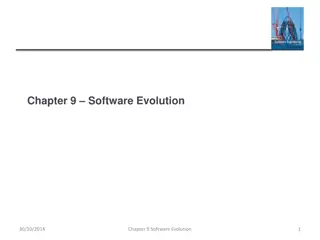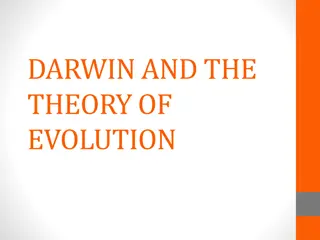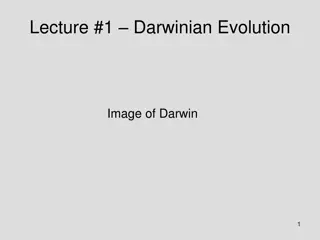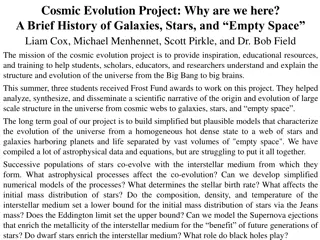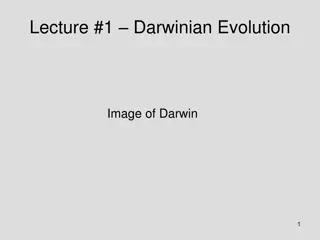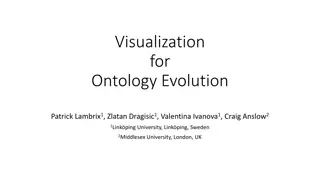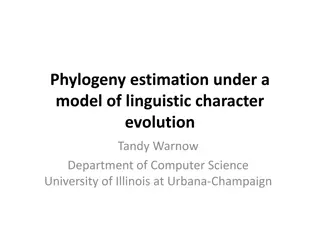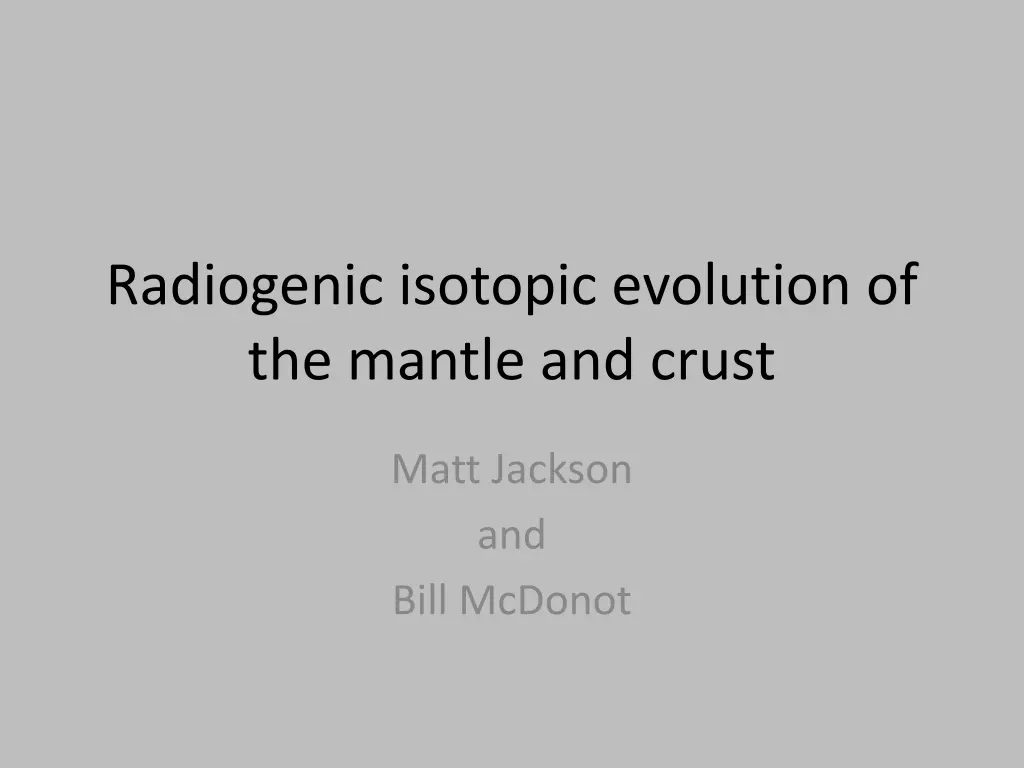
Radiogenic Isotopic Evolution of Mantle and Crust by Matt Jackson and Bill McDonot
Explore the radiogenic isotopic evolution of the mantle and crust through the process of fractionation and decay. Understand how isotopic differences are generated by separating parent and daughter elements and allowing radioactive decay over time.
Download Presentation

Please find below an Image/Link to download the presentation.
The content on the website is provided AS IS for your information and personal use only. It may not be sold, licensed, or shared on other websites without obtaining consent from the author. If you encounter any issues during the download, it is possible that the publisher has removed the file from their server.
You are allowed to download the files provided on this website for personal or commercial use, subject to the condition that they are used lawfully. All files are the property of their respective owners.
The content on the website is provided AS IS for your information and personal use only. It may not be sold, licensed, or shared on other websites without obtaining consent from the author.
E N D
Presentation Transcript
Radiogenic isotopic evolution of the mantle and crust Matt Jackson and Bill McDonot
Sr-Nd isotope plot Hofmann (1997) Global OIB (ocean island basalts, hotspots) and MORB (mid- ocean ridge basalt) We will model Sr-Nd isotopic evolution by crust-mantle differentiation.
How to evolve radiogenic isotopic differences? Step #1. Fractionate the radioactive parent (87Rb) from the radiogenic daughter (87Sr). Step #2. Wait.
Step 1: How to fractionate parent from daughter? Answer: Melt the mantle and extract the melt.
Batch melting 1 Cl = + 1 ( ) C F D F 0 Cl/Co = (Concentration in liquid)/(Concentration original unmelted solid) Where F is the amount of melting. Values range from 0 (no melting) to 1 (100% melting). C D = S Partition coefficient (D): When D < 1, incompatible When D > 1, compatible C l
C C 1 = = L D (1 F) F + + O Batch Melting A plot of CL/CO vs. F for various values of D Batch Melting Rb Sr
Rb Rb-Sr fractionation during mantle melting Sr
Sm-Nd fractionation during mantle melting DSm>DNd
Step #2: Now that we have fractionated parent (Rb) from daughter (Sr), how do we generate isotopic differences? Answer: Wait, and give the 87Rb time to decay to 87Sr.
How to evolve radiogenic isotopic differences? 87Rb 87Sr (t1/2=48.8 billion years) =ln(2)/t1/2 (define decay constant) 87Srmeas = 87Srinitial + 87Rb(e t-1) Questions: 1. When 87Rb/86Sr is high, what happens to 87Sr/86Sr over time? 2. When 87Rb/86Sr is low, what happens to 87Sr/86Sr over time? 143Nd 144Nd= 143Nd 144Ndinitial+ Parent-daughter ratio ( ) y = b + x * m 147Sm 144Nd(elt-1) Decay constant We measure this Time in years 87Sr 86Sr= 87Sr 86Srinitial+ 87Rb 86Sr(elt-1) initial 176Hf 177Hf 176Hf 177Hfinitial+ 176Lu 177Hf(elt-1) = 187Os 188Os= 187Os 188Osinitial+ 187Re 188Os(elt-1)
143Nd 144Nd= 143Nd 144Ndinitial+ 147Sm 144Nd(elt-1) 87Sr 86Sr= 87Sr 86Srinitial+ y = b + ( x )( m ) 87Rb 86Sr(elt-1) 0.526 t = 1 x 109 yrs 176Hf 177Hf 176Hf 177Hfinitial+ Original source 176Lu 177Hf(elt-1) liquid = 0.522 87Sr/86Sr Mantle Residue t = 5 x 108 yrs 0.518 187Os 188Os= 187Os 188Osinitial+ 187Re 188Os(elt-1) 0.514 t = 0 yrs 0.510 87Rb/86Sr 0 0.5 1 1.5 2 b = y-intercept = initial 87Sr/86Sr ratio m = slope (proportional to age) t = ln(m+1)/
How to evolve radiogenic isotopic differences? 147Sm 143Nd + 4He (t1/2=106 billion years) 143Ndmeas = 143Ndinitial + 147Sm(e t-1) Questions: 1. When 147Sm/144Nd is high, what happens to 143Nd/144Nd over time? 2. When 147Sm/144Nd is low, what happens to 143Nd/144Nd over time? Decay constant We measure this Parent-daughter ratio Time in years 143Nd 144Nd= y = b + x * m 143Nd 144Ndinitial+ initial ( ) 147Sm 144Nd(elt-1) 87Sr 86Sr= 87Sr 86Srinitial+ 87Rb 86Sr(elt-1) 176Hf 177Hf 176Hf 177Hfinitial+ 176Lu 177Hf(elt-1) = 187Os 188Os= 187Os 188Osinitial+ 187Re 188Os(elt-1)
143Nd 144Nd= y = 143Nd 144Ndinitial+ b + ( x )( m ) 147Sm 144Nd(elt-1) 0.526 t = 1 x 109 yrs 0.522 Original mantle 143Nd/144Nd Mantle Residue t = 5 x 108 yrs 0.518 liquid 0.514 t = 0 yrs 0.510 147Sm/144Nd 0 0.5 1 1.5 2 b = y-intercept = initial 143Nd/144Nd ratio m = slope (proportional to age) t = ln(m+1)/
Radiogenic isotopes: The role of parent- daughter fractionation AND time
Sr and Nd isotopic evolution of the crust-mantle Assume an initial uniform silicate Earth underwent melting at some time in the past to form continental crust (melt) and mantle (melting residue): 1. Calculate the present-day Sr and Nd isotopic composition of 1%, 2%, and 5% partial melts and respective melting residues, assuming the bulk partition coefficients given in the spreadsheet. 1. Now assume melting occurred at different times (e.g., 1 Ga, 2 Ga, 3 Ga, etc). What happens to 143Nd/144Nd and 87Sr/86Sr in the melt and the residue. 2. Now vary the starting composition of the silicate Earth.
Things to think about Think about the role of time (bigger spread in Sr and Nd isotopes if fractionated earlier). Consider the role of melt fraction (F). What role does variability in the starting composition play? Can you match the global OIB-MORB array with this simple model?












